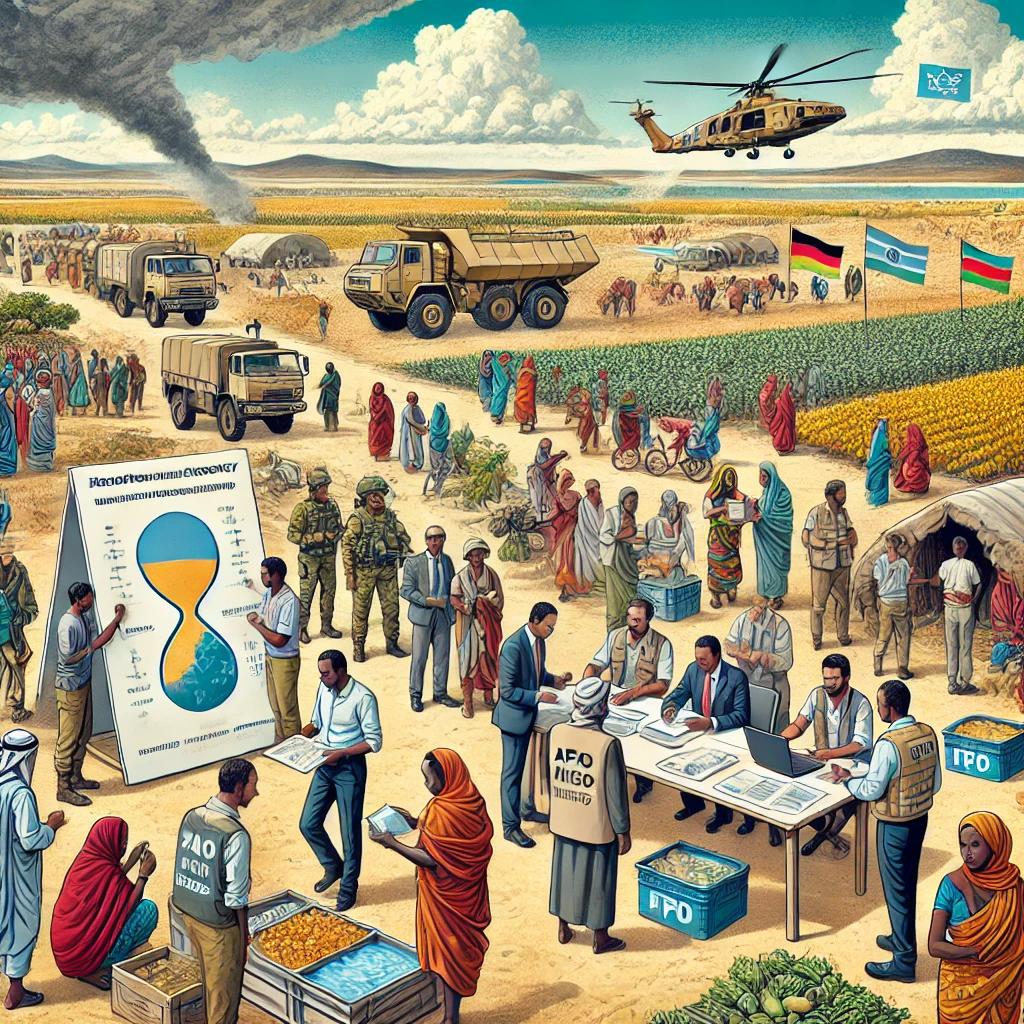Somalia’s Economy Grows 4% in 2024 Amid Reforms, Faces Aid Uncertainty in 2025
For the first time in recent years, the Federal Government of Somalia (FGS) recorded a small fiscal surplus, thanks to better revenue collection mechanisms and prudent expenditure controls.

- Country:
- Somalia
Somalia’s economy maintained solid momentum in 2024, growing by 4.0 percent despite global and domestic challenges. According to the 2025 Somalia Economic Update (Edition 10) published by the World Bank, this growth was primarily driven by a strong agricultural performance, robust remittance inflows, and declining global commodity prices, which helped ease inflationary pressures and boost private consumption.
However, the World Bank cautions that the outlook for 2025 is more guarded, with growth expected to slow due to heightened uncertainty around foreign aid—a lifeline for Somalia’s public services and development investments. As the country navigates a critical phase in its post-conflict transformation, the focus is increasingly on building economic resilience through domestic revenue mobilization, economic diversification, and institutional reform.
2024: A Year of Economic Stability and Optimism
Somalia’s economic expansion in 2024 came on the back of favorable macroeconomic trends. Notable highlights include:
-
Agriculture, a mainstay of the Somali economy, recovered from previous shocks and delivered strong performance, buoyed by improved weather conditions and input availability.
-
Remittances, a major source of household income and foreign exchange, continued to grow, strengthening domestic consumption and financial stability.
-
Inflation dropped below 6 percent, helped by falling commodity prices, easing pressures on household purchasing power.
“It is important for Somalia to continue building its economic institutions, capable of navigating the complexities of its socio-economic landscape and supporting sustained and long-term growth,” said Kristina Svensson, World Bank Country Manager for Somalia.
Fiscal Developments: A Budget Surplus with Persistent Aid Dependency
For the first time in recent years, the Federal Government of Somalia (FGS) recorded a small fiscal surplus, thanks to better revenue collection mechanisms and prudent expenditure controls. Despite this achievement, the country remains heavily dependent on external financing for critical services such as healthcare, education, and infrastructure development.
The implementation of reforms under the Heavily Indebted Poor Countries (HIPC) Initiative, along with post-HIPC economic restructuring, has contributed to fiscal stability. Still, growth remains modest and fragile, with Somalia vulnerable to shocks such as foreign aid volatility, political transitions, security threats, and climate disasters.
2025 and Beyond: A Slower Growth Trajectory
As Somalia enters 2025, growth is expected to moderate to between 3.0 and 4.0 percent annually over the medium term. The declining trend in international aid poses the biggest risk, along with ongoing security and climate challenges. This makes the shift toward a self-sustaining economy more urgent than ever.
“Somalia needs to double its efforts to strengthen its domestic revenue mobilization and lay the foundations for a more resilient and self-sufficient state,” Svensson emphasized.
Unlocking Domestic Revenue Potential
One of the report’s central themes is domestic revenue mobilization—a critical element for Somalia’s long-term development and state-building goals. Despite recent improvements, Somalia’s tax-to-GDP ratio remains among the lowest globally.
“The largest gains in revenue mobilization are expected to come from expanding the tax base and deepening customs reforms,” said Abdoulaye Ouedraogo, World Bank Country Economist for Somalia.
Key recommendations include:
-
Implementing the Income Tax Law and harmonized sales taxes across all Federal Member States.
-
Aligning customs procedures with East African Community (EAC) protocols.
-
Expanding digitalization in tax and customs administration.
-
Investing in human capital and institutional capacity within the Directorate of Revenue and Customs.
A Transformative Development Vision
Somalia’s National Transformation Plan (NTP) 2025–2029 and Centennial Vision 2060 outline an ambitious development strategy focused on economic diversification, resilience, and inclusive growth. Targeted sectors for transformation include:
-
Digital technology – to drive innovation, connectivity, and service delivery.
-
Agribusiness and fisheries – to enhance food security and export potential.
-
Manufacturing and energy – to catalyze industrialization and infrastructure development.
These sectors are expected to generate significant employment opportunities, particularly for youth and women, while supporting sustainable public finances and poverty reduction.
Building Resilience Through Inclusive Growth
To strengthen the social contract and ensure long-term stability, Somalia must prioritize:
-
Job creation through private sector development.
-
Transparent and accountable governance, especially in fiscal policy.
-
Climate adaptation strategies to protect livelihoods and infrastructure.
The World Bank underscores the importance of inclusive reform that reaches marginalized populations, particularly in rural and conflict-affected areas, to foster equity and national cohesion.
Somalia’s path to prosperity is fraught with challenges, but the country has demonstrated encouraging signs of fiscal discipline, reform commitment, and economic momentum. As aid flows become less predictable, Somalia must seize this opportunity to deepen structural reforms, expand its tax base, and build a resilient, self-reliant economy.
The 2025 Somalia Economic Update offers a clear call to action: accelerate reform, empower institutions, and invest in sustainable growth. With consistent policy execution and strategic development partnerships, Somalia can realize its potential as a stable and thriving nation in the Horn of Africa.










